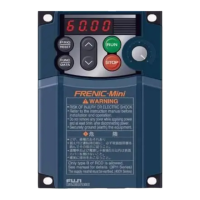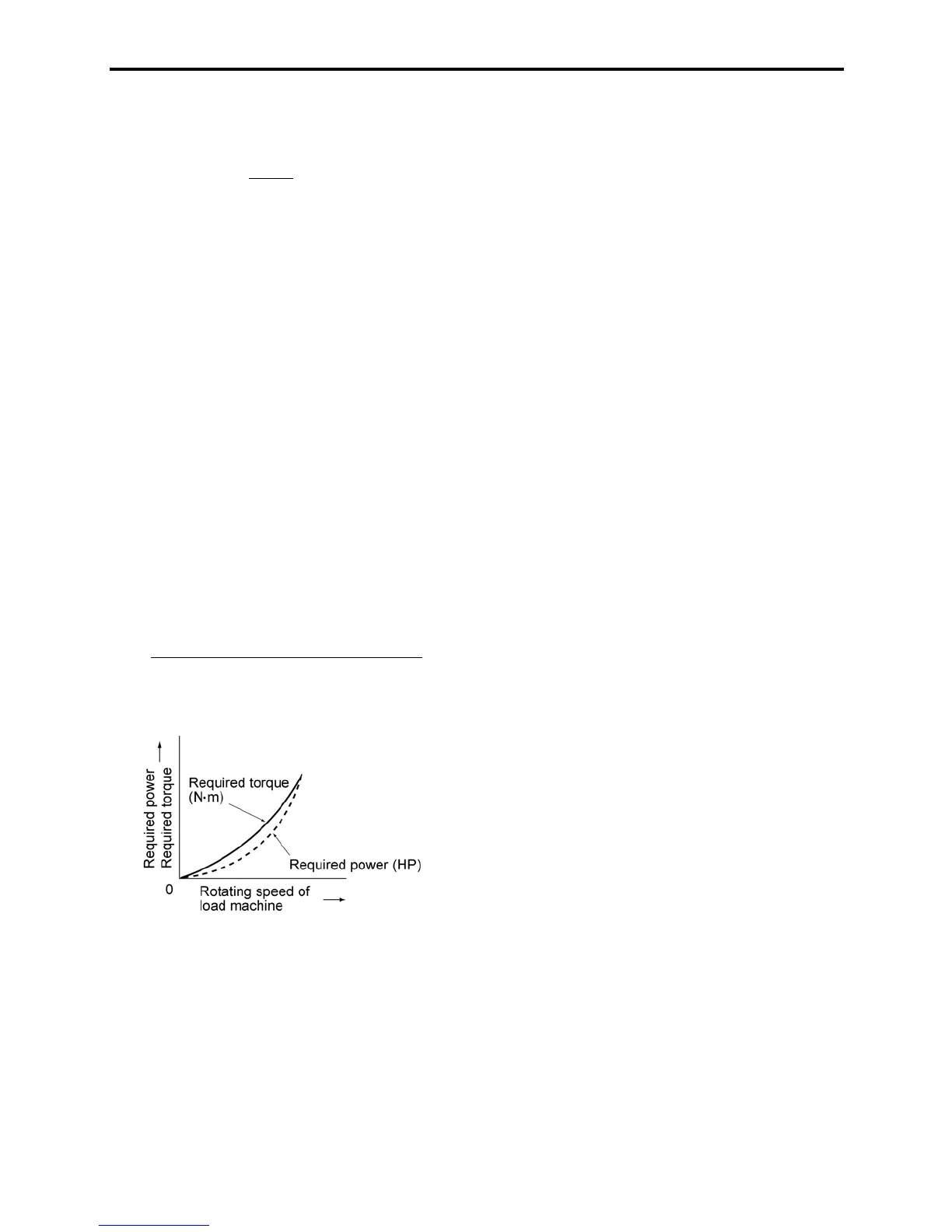G-6
V/f control
The rotating speed N (r/min) of a motor can be stated
in an expression as
)s1(
p
f120
N u
u
where,
f: Output frequency
p: Number of poles
s: Slippage
On the basis of this expression, varying the output
frequency varies the speed of the motor. However,
simply varying the output frequency f (Hz) would
result in an overheated motor or would not allow the
motor to demonstrate its optimum utility if the output
voltage V (V) remains constant. For this reason, the
output voltage V must be varied with the output
frequency f by using an inverter. This scheme of
control is called V/f control.
Variable torque load
A squared torque load is characterized by:
1) A change in the required torque in proportion to
the square of the number of revolutions per minute.
2) A power requirement that decreases in proportion
to the cube of the decrease in the number of
revolutions per minute.
55.9
)mN(Torquemin)/r(speedRotating
)HP(powerquiredRe
xu
Related function code: F37
Applications: Fans and pumps
Voltage and frequency variations
Variations in the input voltage or frequency within
permissible limits. Variations outside these limits
might cause an inverter or motor to fail.

